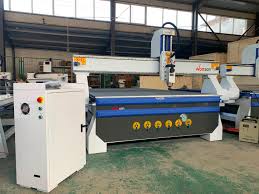In the world of modern manufacturing, CNC machining has become a go-to solution for producing precise, high-quality components across a range of industries—from aerospace to consumer electronics. While CNC machines are powerful and accurate, the quality of the final part heavily depends on how well the CAD model is designed.
Whether you’re creating prototypes or full-scale production parts, understanding how to optimize your CAD files for CNC machining is crucial. This guide covers key design tips, common pitfalls to avoid, and how smart CAD design improves efficiency, quality, and costs—especially when using CNC turning services.
📌 Why Optimizing CAD Files for CNC Matters
Even the most advanced CNC machine can’t fix a poor design. Optimized CAD files:
-
Reduce machining time
-
Lower production costs
-
Improve surface finish and tolerance accuracy
-
Minimize tool wear
-
Enhance material usage
By designing with manufacturability in mind, you shorten lead times and ensure smoother workflows between engineering and fabrication teams.
🧠 Understanding CNC Turning
Before jumping into CAD tips, it’s important to understand one of the key CNC processes: CNC turning.
CNC turning is a subtractive manufacturing process where a cutting tool removes material from a rotating workpiece. It is best suited for producing cylindrical parts such as shafts, bushings, pins, and threaded components.
To explore this process in detail or source reliable CNC turning services, check out:
👉 cnc turning services
💡 Top Design Tips for CNC Machining Optimization
Here are expert tips to ensure your CAD files are CNC-friendly:
1. Use Standard Hole Sizes
Designing custom hole sizes may lead to additional tooling or unnecessary rework. Stick to standard drill bit dimensions wherever possible (e.g., 3mm, 6mm, 10mm).
-
Why it matters: Reduces tooling changes and machining time.
-
Tip: Specify tolerances only when essential.
2. Avoid Unnecessarily Tight Tolerances
While CNC machines can deliver tight tolerances, they increase machining complexity and cost.
-
When to use tight tolerances: Critical mating or interfacing parts.
-
Recommended practice: Use ±0.005″ only where required and default to ±0.01″ elsewhere.
3. Design with Tool Accessibility in Mind
Ensure all features in your design are reachable by cutting tools.
-
Avoid: Deep pockets, undercuts, and tight corners that are hard to reach.
-
Use: Fillets and open geometries to improve accessibility.
4. Add Fillets to Internal Edges
Sharp 90-degree internal corners are difficult (and expensive) to machine. Use internal radii that match standard tool sizes.
-
Why it helps: Prevents tool chatter and improves machining speed.
-
Recommended: 1mm to 3mm radius for most internal corners.
5. Limit Part Depth and Wall Thickness
Long, thin features tend to vibrate, bend, or deflect during machining.
-
Guideline:
-
Wall thickness: ≥1mm (for metals), ≥1.5mm (for plastics)
-
Pocket depth: ≤4x the cutter diameter
-
-
Result: Better dimensional accuracy and smoother surface finish.
6. Design for CNC Turning: Use Symmetry
Since CNC turning works on rotational symmetry, design parts with round profiles when possible.
-
Best designs: Shafts, bushings, cylindrical pins, threads
-
Avoid: Flat or angular surfaces perpendicular to the axis
Explore professional turning solutions at:
👉 CNC turning services
7. Optimize Threads and Fasteners
Use standard thread sizes and avoid ultra-small or extra-deep threads.
-
Pro tip: Don’t design threads smaller than M3 or deeper than 2x diameter.
-
Bonus: Include chamfers at thread entries for cleaner engagement.
8. Avoid Deep Blind Holes
Blind holes that are too deep can trap chips and reduce tool life.
-
Limit: Hole depth to 3-4x diameter for blind holes
-
Alternative: Use through-holes if the design allows
9. Combine Machining Processes When Possible
If your part requires both turning and milling, design it so both can be performed on a single setup or multi-axis machine.
-
Benefit: Reduces repositioning errors and shortens production time.
-
Example: Complex flanged shafts or stepped pins
Looking for integrated services? Consider trusted providers like these:
👉 CNC turning services
10. Provide Clear, Organized Technical Drawings
Always support your CAD file with detailed 2D drawings that include:
-
Tolerances
-
Material specifications
-
Thread details
-
Surface finish requirements
This ensures the machinist understands your design intent and avoids costly misinterpretations.
✅ Bonus: Common CAD Mistakes to Avoid
-
Floating text or notes not linked to geometry
-
Incomplete dimensioning
-
Undefined threads or hole types
-
Overly complex geometry with no added functional value
-
Ambiguous material specifications
Avoiding these issues not only speeds up manufacturing but also strengthens supplier relationships.
🔧 How Good Design Saves Money
Smart design isn’t just about aesthetics—it can significantly reduce:
-
Material waste
-
Machining time
-
Post-processing requirements
-
Tool wear and rework costs
Every minute saved on the shop floor translates into cost savings and faster delivery.
🏁 Final Thoughts
CNC machining offers unbeatable precision and reliability—but only when the CAD design supports the process. Whether you’re designing parts for turning, milling, or both, the tips in this guide will help you optimize your files for better performance, lower costs, and fewer headaches.
And when you’re ready to turn your design into a reality, trust experts who specialize in turning solutions. Learn more about high-quality CNC turning services and bring your next part to life with accuracy and speed.
Have a design ready to machine? Optimize it first—because good parts start with great CAD.
- Design for CNC Machining: Tips to Optimize Your CAD Files
- Whether you're creating prototypes or full-scale production parts, understanding how to optimize your CAD files for CNC machining is crucial. This guide covers key design tips, common pitfalls to avoid, and how smart CAD design improves efficiency, quality, and costs—especially when using CNC turning services.
- Design for CNC Machining: Tips to Optimize Your CAD Files
Related posts:
 High-Quality Biomedical Waste Incinerators & Laboratory Glassware Made in India
High-Quality Biomedical Waste Incinerators & Laboratory Glassware Made in India
 Understanding the Role of IoT in Modern Manufacturing: A Comprehensive Guide to Smart Factories and Industrial Transformation
Understanding the Role of IoT in Modern Manufacturing: A Comprehensive Guide to Smart Factories and Industrial Transformation
 Best Account Management Software for All Businesses – EmizenTech
Best Account Management Software for All Businesses – EmizenTech
 Top 15 Global Website Design Companies You Can Hire in the 2025
Top 15 Global Website Design Companies You Can Hire in the 2025
 Empowering Qatari Retail Businesses with Microsoft Dynamics 365 Commerce
Empowering Qatari Retail Businesses with Microsoft Dynamics 365 Commerce
 Safety Procedures in Heavy Equipment Moving: Best Practices for Workplace Security
Safety Procedures in Heavy Equipment Moving: Best Practices for Workplace Security
 How Microinteractions Are Revolutionizing Mobile UI/UX Design in 2025
How Microinteractions Are Revolutionizing Mobile UI/UX Design in 2025
 How to Fix iPhone Screen Overheating Issues and Prevent Future Damage
How to Fix iPhone Screen Overheating Issues and Prevent Future Damage







